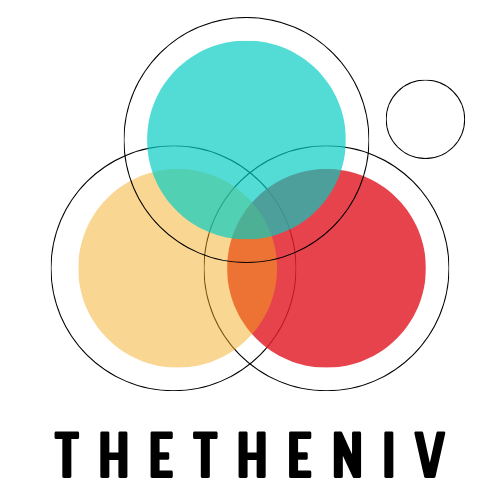Anúncios
start strategy beginner — do you ever wonder if there is a smarter way to learn planning that actually speeds up progress?
Good strategy is the pursuit of advantage. A clear beginning builds confidence, speeds growth, and cuts down on unhelpful detours as you learn core skills.
This short guide gives a simple, professional way to learn fundamentals without promising outcomes. You will find tools like Rumelt’s kernel and methods to set goals, map context, and turn ideas into coherent actions.
Focus on a few important moves rather than trying to do everything. Use small projects, measure what you try, adapt from feedback, and track progress over time.
Bring peers or a mentor into your process when useful. With steady practice and measured steps, you build useful knowledge and durable confidence for future work.
Anúncios
What Strategy Means for Beginners Today
A good plan picks a limited goal and aligns people and resources toward it.
Think of strategy as the pursuit of advantage you care about. If you don’t need an edge, you don’t need a plan. In the real world, that edge is different for companies, community groups, and people in a business.
Strategy shows up everywhere — in product roadmaps, brand notes, support processes, and design decisions. Your title doesn’t matter; product managers, designers, and operators use it when they trade off time, money, or quality.
Anúncios
“Diagnosis plus a guiding policy plus coherent actions make a plan effective.”
Use Rumelt’s simple framework: name the core problem (diagnosis), pick a focused policy to guide choices, then list clear, aligned actions. For example, if churn is the diagnosis, your policy could be to improve onboarding, and your actions might be better tutorials, emails, and in-app tips.
Why a strong beginning matters
Starting with a narrow scope and short timeline gives quick wins that build confidence. It keeps you from adding noisy complexity and helps small teams compound growth over time.
- Define which advantage matters for your field.
- Look for opportunities through cross-functional community input.
- Keep goals realistic so you can learn and adapt without needing a lot of money or formal authority.
start strategy beginner: A Practical Starting Point
Define a clear, measurable result before you pick actions to pursue it. That one-sentence outcome keeps your objectives grounded and helps the team know what “good” looks like.
Set outcomes, not just aspirations
Write a one-sentence outcome that ties objectives to a measurable advantage. For example: “Reduce trial-to-paid churn by 10% in 90 days by improving activation steps.”
Convert aspirations into objectives by naming a target metric, baseline, and the audience segment you will help.
Map your context
List audiences, competitors, capabilities, and constraints on one page. Use simple headings: jobs-to-be-done, direct and indirect rivals, tech and channels, and limits like budget or compliance.
- Audiences — who and what they need.
- Competitors — who borrows attention or dollars.
- Capabilities — what you can build fast.
- Constraints — what might block execution.
Choose a small scope and short time horizon
Pick one audience, one channel, and a 90-day window. Set biweekly check-ins so each day and week ladder up to clear learning.
“Test quickly, measure honestly, then adapt.”
List 3–5 tasks you can finish in a week (interviews, funnel analysis, message tests). Prepare if/then rules and share the plan with one mentor for rapid feedback.
Building Foundations: Layers, Types, and Where You Fit
Think of organizational planning as a layered map where each level guides the next.
At the top, corporate teams decide who, what, and where the companies will play. That level sets broad objectives and shapes portfolio choices.
In the middle, business units pick how they will compete. They translate corporate outcomes into measurable goals and customer-facing moves.
At the base, functional teams execute capabilities. Product, marketing, design, operations, and content run the day-to-day work that delivers on those goals.
Picking your lane
If you love storytelling and perception, brand work fits you. If you enjoy shipping features, product is your bit of the map.
Favored by people who like funnels and channels? Try marketing. Care about flows, cost, and reliability? Operations makes sense.
Design matters when you care about user journeys and value exchange. Any type can be a solid entry point — choose by your field, interests, and where you can add value now.
“Map your strengths to a lane, then learn one adjacent skill to widen your impact.”
- How objectives flow: corporate → business → functional roadmaps.
- Example: an SMB-focused unit, organic marketing, and customer success improving activation to boost growth.
- Fix misalignment with brief cross-layer check-ins to reduce rework.
You can contribute from any role by linking your work to higher-level objectives and naming trade-offs clearly. That clarity helps teams align faster and accelerate growth together.
Skills, Habits, and Community That Accelerate Your Progress
The right daily habits and a helpful community make measurable progress much more likely.

Study habits that stick
Use short, focused blocks of 25–45 min with active recall to turn reading into usable knowledge.
For example, read a short article, close it, then write one sentence that summarizes the diagnosis and one action you could test.
Practice spaced repetition for core concepts so you can apply them under pressure. Balance inputs with outputs: for each hour of reading, produce an artifact—hypothesis, map, or test plan.
Feedback loops: mentors, peers, and communities
Share weekly tasks with a mentor or peer group to reduce blind spots before you commit resources.
Join a lane-focused community so you learn from people solving adjacent problems and spot new opportunities earlier.
“Good feedback shortens the time between idea and useful result.”
Confidence through small wins
Plan weekly tasks that map directly to your goals: draft a diagnosis, map a journey, or test messaging with five users in a day.
Track experiments and write one line after each: “what I’d do differently.” This turns mistakes into growth and builds lasting confidence.
- Protect energy: set time limits and reset goals when constraints change.
- Celebrate small wins to keep momentum and boost motivation.
- Keep a visible log of experiments, outcomes, and lessons learned.
From Ideas to Coherent Action: Simple Tools and Real Examples
Translate a short, evidence-based diagnosis into a few concrete tasks you can test fast.
Turn diagnosis into moves: align actions to a guiding policy
Start with a tight diagnosis grounded in data. For example: “Activation drop-off at step 3 (payment) is 40% higher for new SMB signups.”
Set a guiding policy that narrows focus, such as remove friction in first-value moments. Then choose 3–5 actions that match that policy so work stays coherent.
Three quick tests: “yeah, right,” “so, what,” and “yes! and…?”
Run each action through these checks. If people say “yeah, right,” it lacks credibility.
“So, what” means it misses clear objectives. “Yes! and…?” means it is feasible and invites additive moves.
Example mini-plan: a functional plan for a 90-day marketing push
Objective: raise trial-to-paid by 10% for new SMB signups. Channels: website, onboarding emails, in-app.
- Weeks 1–2: research, instrumentation, assign owners (growth marketer, designer, analyst).
- Weeks 3–4: copy and UI tests.
- Weeks 5–8: iterative experiments and daily check-ins.
- Weeks 9–12: analyze cohorts, codify learnings, and run a short retro.
Define metrics (activation rate, time-to-first-value, support tickets) and plan contingencies by situation. Document what worked by type of intervention so companies and people can repeat the process for future growth.
Conclusion
Small, deliberate moves early on make big differences later in your work.
Keep clear goals, a narrow scope, and a cadence of short tests. Measure outcomes with simple dashboards and written retros so you can see real progress and build confidence.
Adapt the examples in this guide to your context rather than copying them verbatim. When stakes, budgets, or multiple companies are involved, consult mentors or subject experts.
Choose ethical, user-centered choices that create value for people while you pursue business growth. Share findings with your community to find new opportunities and sharpen judgment.
You’re going to make mistakes. Treat each run as data: measure, learn, and try again. For help framing a closing paragraph or the next move, see planning intros and conclusions.



